An in-person Study of the Costa Rican Nicoya Peninsula ‘Blue Zone’.
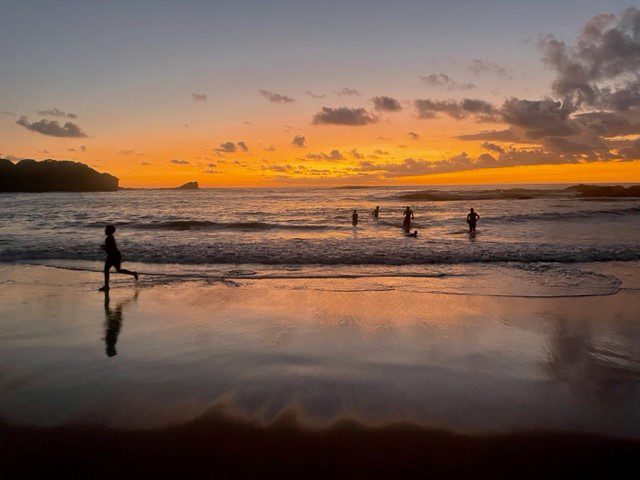
At sunset in Costa Rica you won’t typically find families inside watching TV, or tourists sitting around bars. Most come together and find their space on a beach, witnessing evening glory as the sun lowers over the water and closes the day.
In Part I we overviewed what Blue Zones are, their locations, and detailed the demographics of Costa Rica specifically the community of La Delicia in the Nicoya Peninsula which was the focus of this study. We also detailed three of the key lifestyle elements contributing not only to this community’s longevity but their strong well-being as they achieve greater age milestones than their USA neighbours, which were: nutrition and water quality, community & connection, “Plan De Vida” or “Life Purpose “
Disclosure: I am visiting the Blue Zones in person to research and experience the macros of chosen and legacy lifestyles. I also seek to understand if there are any potential threats to maintaining their Bluezone status. In Part III we will discuss how we all could adapt much of their deliberate lifestyles into our own daily lives regardless of the differences in environment, plus leave a link for any of you wanting to construct you own ‘Plan De Vida/Life purpose”
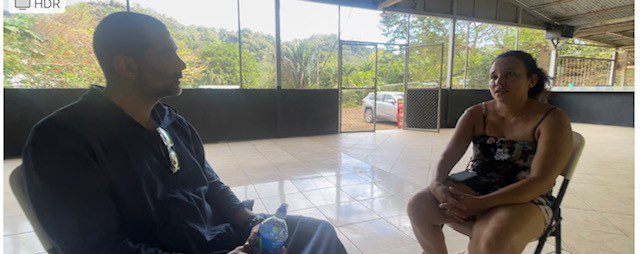

Efolia the Community leader in La Delicia answering questions through my translator Vram. Below we will cover off the other key areas we discussed with the community on how they stay so well within their extended lifespans.
Physical Activity
The blue zones typically have high levels of incidental activity, which is a volume of movement built up in small amounts over the course of a day. In other words, they do not have long periods of sitting down at a desk. La Delicia is no exception Their work is primarily manual, outdoors, working in resorts and the men in particular -building labour. As the community has modernised with communication and transport, the committee had foresight to install a communal outdoor gym to encourage gathering together and maintain levels of activity in those who were no longer working or were utilising transport to attend outside work. Everything within the small population of 400 is walkable, including the community centre with laneways between houses, school, church and the key connector: the community centre. The population here make a deliberate effort to keep moving and stay strong, and they are resolute it’s a key part of their wellbeing.
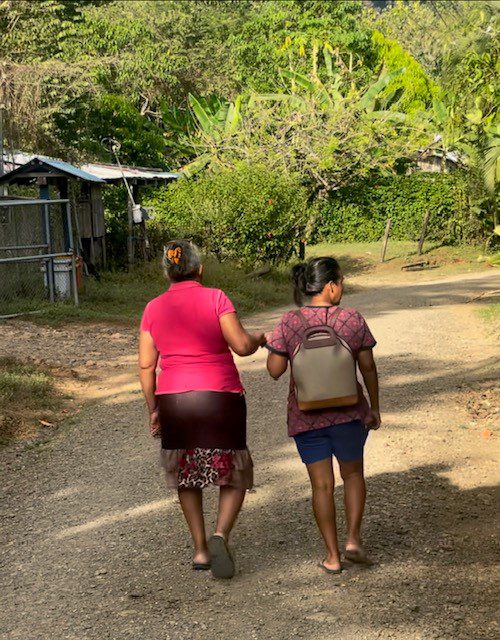

When asked what would they want the outside world to understand about their culture, without hesitation they replied “We care deeply about nature and our planet”
Immersion in Nature/Ecology
When I asked the community council if there was anything they would want the outside world to understand about them, without hesitation they told me “We care deeply about nature and our planet”. They have a strong symbiotic relationship with the surrounding ecology. As they rely on “mother earth” to provide pure water, good soil, sunlight, fresh air, and sustenance, they accept full responsibility for reciprocal care. Despite a more remote location than closer small towns La Delicia has a 20-year-old recycling programme. You won’t find plastic lying in the streets here, or in fact floating in the wash on the beautiful beaches of Costa Rica. Each morning when I walked the beach in Nosara I passed “beach angels” – a group of men who voluntarily picked up every tiny piece of rubbish that wasn’t sand or shell.
Efolia, the community leader walks most days, with other members through forest tracks, inherently understanding that immersion in nature on a regular basis is revitalising. The committee were all interested to hear that there had been another recent study (1) indicating that after just a one hour walk in nature, activity in brain regions involved in stress production, decreased.
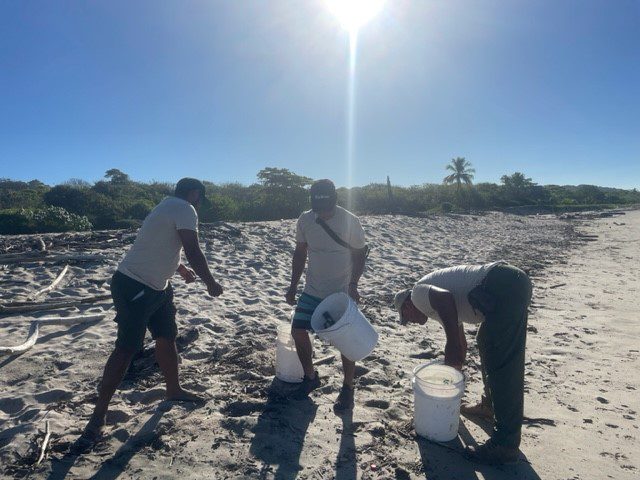

Volunteers scan the beaches at Nosara every day, picking up the tiniest pieces of plastic from the tide line. With such pristine beaches, it’s heartening to witness locals and visitors respect the environment, taking care to remove rubbish before they leave.
Lower Rates of Lifestyle Illness & Prescribed Medications/Healthcare
At the time of writing, I do not have access to specific health data for this community. The empirical evidence I gathered from speaking to the population that lives here is interesting:
They believe they have very low rate of Type II diabetes, Cardio Vascular Disease and cancers under 60. Costa Rica has an excellent community-based health care system. Clinicians have a hub and spoke type call system that means each community member sees a doctor at least once a year, and, those older or at risk up to three times a year. The clinicians travel to the people. When I enquired about mental health care services – they were perplexed. No-one was aware of residents who suffered from anxiety or depression, let alone being prescribed medications for treatment.
As an aside they also told me very few women had caesarean sections. (Costa Rica used to have near to 10% infant mortality in the 1950’s which was put into rapid decline with the introduction of a centralised health care system)
Pace of life
Costa Rica is a popular destination for many Americans and Europeans seeking not only a warm climate rich in nature, but the enforced slower pace of life. There are a number of “unicorns” who have quiet semi permanent locations here. The driver for choosing Costa Rica seems despite some typical western frustrations that come typically come with an island paradise, a slowdown in pace has been life changing. A number of the La Delicia community are employed in the local tourist town Nosara, where frazzled travelers on the wind-down stay. The island residents have full access to the outside world and learn much from the visitors. Yet this hasn’t provided the allure I have seen in other such paradises eg Asia, where many locals desire to follow their guests home. The committee expressed little interest in world travel, resources being an obvious factor, but they also know that their pace of life enhances their well-being and longevity, and have high levels of satisfaction with their life circumstances.
The Future?
Any foreigner has the same rights as a resident or non-resident in Costa Rica, except voting, so foreign investment has been reasonably heated in the last 15 years or so. Tourism is a key source of income for most of Costa Rica. That equates to some changes and compromises. Provision of non-traditional foods and facilities catering for the tourism market has seen the introduction of fast-food restaurants in the major cities. This introduction into the country concerned me the most, as it does the locals, with the possibility of it bleeding into more areas. There is heavy taxation on imported foods, however if these chains are are able to source locally, this could make rolling additional outlets to smaller areas more fiscally viable. Dan Buettner (Blue Zones founder and researcher) was quoted as saying ” when the fast food chains come in the front door, good health goes out the back door”
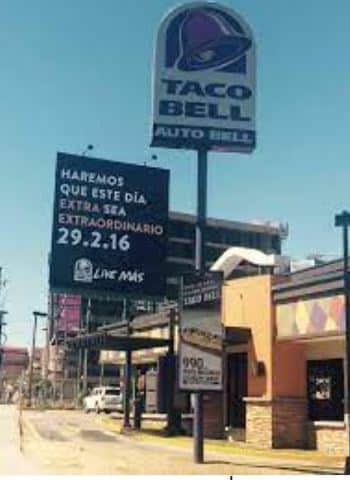

I asked the community what if any fears they had for the future. Their key concern is as overseas ownership increases, it could see the potential destruction of their nature rich environment. They have worked hard to preserve it and protect their rainforests and many wildlife that are easily accessible such as the famous Sloth, incredible bird life (including the exquisite hummingbird), monkeys and reptiles.
In La Delicia many of the youth work in the local tourist town. They also fear that some of the big city issues of San Jose will migrate to their youth, ie: alcohol, meth (crack) and marijuana.


Soccer is the golden sport here. Their passion is obvious with the oversized soccer field that is central to everything. Keeping their youth engaged, fit and team oriented is now mission critical. They are building a gym at their tiny school to provide a cross training and an all-weather facility. The slab and steel frame is up, but progress is slow as money for labour and materials comes from the wages of the locals. I am hoping to help fundraise the $40,000 USD to complete this worthy project over the next year.
No two blue zones are the same, and although they share many overlapping characteristics, some features of their daily lifestyle hold more priority than others, while some are regionally unique. What I found interesting is that blue zones don’t necessarily have an environment easily supporting their chosen way of life, yet they seem to intrinsically adapt these daily practices to contribute to their well-being regardless.
In part III we will discuss how we can take the learnings from La Delicia and adapt a number of their default strategies into our own daily lives for better health outcomes.
Then, look out next month for a report on my visit to Loma Linda – a blue zone that thrives surprisingly in California, USA, where this community lives 7-11 years longer than their other North American Counterparts.
(1) How nature nurtures: Amygdala activity decreases as the result of a one-hour walk in nature. Sept 2022. Sonja Sudimac, Vera Sale & Simone Kühn . Molecular Psychiatry (Mol Psychiatry) ISSN 1476-5578 (online)
